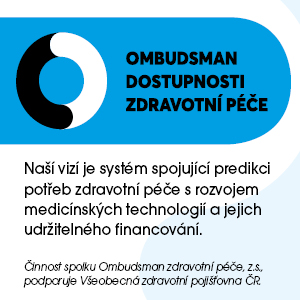


Číslo 4 / 2023
Diabetes prevention: how nurses can help their patients and themselves
Nurses may have a higher risk for diabetes partly due to their profession, says Carmina Bautista, MSN, NP, FNP-BC, BC-ADM, who has more than 20 years of clinical experience with diabetes management.
The occupational stress, disruptive work schedule, and long work hours many nurses endure can contribute to an unhealthy lifestyle – which may not include regular exercise, a restful sleep schedule, or healthy eating habits.
Findings from the Healthy Nurse Survey in 2021 show that the average body mass index of nurses and nursing students is 27,58, which is squarely in the overweight range and raises their risk for diabetes.
To help you guide your patients and lower your risk of diabetes, Carmina shares five recommendations for diabetes prevention. You don’t have to train for a marathon or give up all your favorite foods to prevent diabetes. Carmina recommends setting some basic rules you can incorporate yourself — and share with your patients.
1. Keep your diet simple and sustainable.
You don’t need fad diets or fancy food to eat healthier. Instead, focus on the quality of the nutrient content of your food choices. Choose complex carbohydrates and minimally processed foods such as whole wheat, oats, and grains instead of cakes, chips, soda, or sweets. Incorporate fruits and colorful leafy vegetables in your daily diet to get essential vitamins and nutrients — the fiber also helps you feel full and eat less. Replace saturated fats with healthy fats, such as olive oil and omega fish oil, to reduce cardiovascular disease risk.
2. Pay attention to portions.
It’s common to have what Carmina calls “distortions in portions.” Consider measuring and weighing your food to see how much you really eat.
If measuring isn’t your thing, follow the MyPlate Plan created by the U.S. Department of Agriculture (USDA). It provides a simple and helpful strategy to keep food portions and food choices consistent with the recommended USDA dietary guidelines.
Using a 9-inch plate, draw an imaginary line down the middle. Divide one of the sections in half. Fill the largest section (half the plate) with colorful, non-starchy vegetables such as broccoli, green beans, spinach, and carrots. In a quarter of the plate, add whole grains and starchy foods such as beans, whole-wheat bread, corn, brown rice, or quinoa. In the other quarter of the plate, add your lean protein such as chicken, fish, low-fat cheese, or tofu.
3. Find a form of exercise you enjoy.
Exercise helps keep your heart and muscles healthy and strong. But it can also improve your sleep, stress, and eating choices. Choose an activity you like — it will motivate you to get moving. Try to remove barriers to your exercise. If you joined a gym, but it’s inconvenient to get there, you might be better off lacing up your sneakers to walk around your neighborhood. Or find free workouts online if your neighborhood isn’t ideal for outdoor exercise.
4. Reduce stress.
Reducing stress and managing your mental health is especially important for nurses, who often work in high-stress environments. Unmanaged stress can cause elevated blood sugar levels and make you more likely to engage in unhealthy behaviors (eating poorly, drinking alcohol, smoking).
Carmina also warns not to leave mental health issues untreated. “Mental health is a major issue in the nursing profession due to burnout and the moral injury we experienced during the pandemic and continue to experience in our profession. If you have symptoms of depression, you need to seek help.”
5. Get screened.
As a nurse, it’s not always easy to practice what you preach. But getting screened for diabetes is essential for everyone, especially if you have risk factors for diabetes, including age 40 or above, family history of diabetes, hypertension, overweight or obesity, personal history of gestational diabetes, physical inactivity. “We need to be screened so that early treatment and preventive measures can happen,” Carmina says. “Many people with diabetes had prediabetes for many years, but it wasn’t diagnosed or diagnosed too late.”
Please note the use of quotation marks in the text and their use in English.
Slovníček
occupational – pracovní
disruptive – rušivý
to endure – vydržet; snést
findings – zjištění
squarely – přímo; přesně
overweight – nadváha
range – rozmezí
to incorporate – zahrnout; začlenit; přidat
sustainable – udržitelný
fad – módní; bláznivé
fancy – luxustní; oblíbený
leafy – listový
saturated – nasycený
distortion – zkreslení; překroucení; zkomolení
consistent – důsledný; stejný; konzistentní
non-starchy – bez škrobu
lean – libový
inconvenient – nevyhovující; nevhodný
to lace up – šněrovat; zašněrovat
sneakers – tenisky
to engage – zapojit
to treat – léčit
to seek – hledat
to screen – prověřit (get screened – nechat se prověřit)
to preach – zvěstovat; kázat
Source: Healthy Nurse, Healthy Nation blog. Strategies for preventing diabetes and more. (editorially shortened). [online]. Available from: https://engage.healthynursehealthynation.org/blogs/4/4277.
Další články v tomto čísle
- Editorial
- Anděl mezi zdravotníky – finalisté čtvrtého ročníku
- Zdravotnické linky krizové podpory
- Toulavé boty Julia Lukeše
- Transplantace slinivky, ledvin nebo Langerhansových ostrůvků očima sestry v Transplantační ambulanci Centra diabetologie
- Léčba diabetu na prahu 3. tisíciletí
- Péče o dolní končetiny u diabetiků v podiatrické ambulanci
- Dietní léčba diabetes mellitus 2. typu
- Historie pracovní skupiny kardiologických sester a spřízněných profesí
- Příčiny malnutrice u pacientů s kardiovaskulárním onemocněním





















